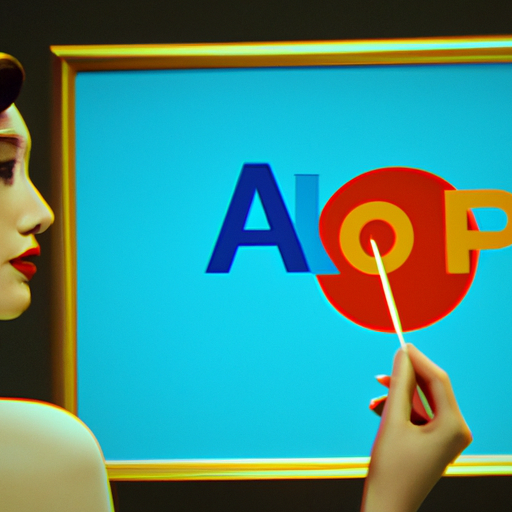
-
Table of Contents
- Vintage Advertising Art and Its Influence on Modern Marketing
- The History of Vintage Advertising Art
- Characteristics of Vintage Advertising Art
- The Influence of Vintage Advertising Art on Modern Marketing
- 1. Nostalgia Marketing
- 2. Visual Appeal
- 3. Storytelling and Emotional Connection
- 4. Authenticity and Trust
- Conclusion
Vintage Advertising Art and Its Influence on Modern Marketing

Advertising has always been an essential component of marketing strategies. Over the years, various forms of advertising have emerged, each with its unique style and approach. One such form is vintage advertising art, which continues to have a significant influence on modern marketing. In this article, we will explore the history of vintage advertising art, its characteristics, and how it has shaped the way marketers approach their campaigns today.
The History of Vintage Advertising Art
Vintage advertising art refers to the artistic style and design elements used in advertisements from the late 19th century to the mid-20th century. This period is often referred to as the “Golden Age of Advertising” due to the creativity and innovation displayed in the advertisements of that time.
During this era, advancements in printing technology allowed for the mass production of colorful and visually appealing advertisements. Advertisers began to recognize the power of visual communication and started incorporating artistic elements into their campaigns. Vintage advertising art became a way to capture the attention of consumers and convey messages effectively.
Characteristics of Vintage Advertising Art
Vintage advertising art is characterized by several distinct features that set it apart from other forms of advertising:
- Simplicity: Vintage advertisements often had a simple and straightforward design. They focused on conveying the message concisely without overwhelming the viewer with excessive information.
- Eye-catching visuals: Vintage ads relied heavily on visually appealing illustrations and graphics to capture the viewer’s attention. Bold colors, intricate details, and imaginative imagery were commonly used.
- Emotional appeal: Vintage advertising art aimed to evoke emotions in viewers. Whether it was nostalgia, happiness, or desire, these ads tapped into the consumer’s emotions to create a lasting impact.
- Typography: Typography played a crucial role in vintage advertising art. Unique and decorative fonts were used to create a distinct visual identity for the brand or product being advertised.
- Brand storytelling: Vintage ads often told a story or conveyed a narrative to engage the viewer. They created a connection between the consumer and the brand, making the advertisement more memorable.
The Influence of Vintage Advertising Art on Modern Marketing
Despite the evolution of advertising techniques, vintage advertising art continues to influence modern marketing in several ways:
1. Nostalgia Marketing
Vintage advertising art taps into the power of nostalgia, evoking positive emotions and creating a sense of familiarity. Many modern brands leverage this technique to connect with their target audience. By incorporating vintage design elements or referencing iconic advertisements from the past, companies can establish a nostalgic connection that resonates with consumers.
For example, Coca-Cola’s use of vintage Santa Claus illustrations during the holiday season creates a nostalgic and heartwarming association with the brand. This approach not only reinforces brand loyalty but also attracts new customers who appreciate the sentimental value of vintage advertising art.
2. Visual Appeal
The visually striking nature of vintage advertising art continues to inspire modern marketers. The use of bold colors, imaginative illustrations, and unique typography can capture attention in a cluttered advertising landscape.
Brands like Apple have embraced this influence by incorporating minimalist design elements reminiscent of vintage advertising art. Their clean and visually appealing advertisements stand out among competitors and convey a sense of sophistication and elegance.
3. Storytelling and Emotional Connection
Vintage advertising art excelled at storytelling and creating emotional connections with consumers. Modern marketers recognize the power of storytelling in engaging audiences and building brand loyalty.
One notable example is the “Share a Coke” campaign by Coca-Cola. By personalizing their bottles with popular names, Coca-Cola created a sense of individuality and connection with consumers. This campaign’s success can be attributed to its ability to tap into the emotional appeal and storytelling techniques used in vintage advertising art.
4. Authenticity and Trust
Vintage advertising art often conveyed a sense of authenticity and trust. In an era of digital marketing and skepticism, consumers are increasingly drawn to brands that appear genuine and trustworthy.
Brands like Levi’s have successfully incorporated vintage advertising art into their campaigns to establish a sense of authenticity. By showcasing their heritage and using vintage-inspired visuals, Levi’s creates a connection with consumers who value the brand’s history and legacy.
Conclusion
Vintage advertising art continues to be a powerful influence on modern marketing. Its simplicity, eye-catching visuals, emotional appeal, typography, and brand storytelling techniques have shaped the way marketers approach their campaigns today. By leveraging nostalgia, visual appeal, storytelling, and authenticity, brands can create a lasting impact on consumers and establish a strong connection with their target audience.
As marketing strategies continue to evolve, vintage advertising art serves as a reminder of the timeless principles that drive successful advertising campaigns. By understanding and incorporating the elements that made vintage advertising art so effective, marketers can create compelling and memorable campaigns that resonate with consumers in the modern era.
